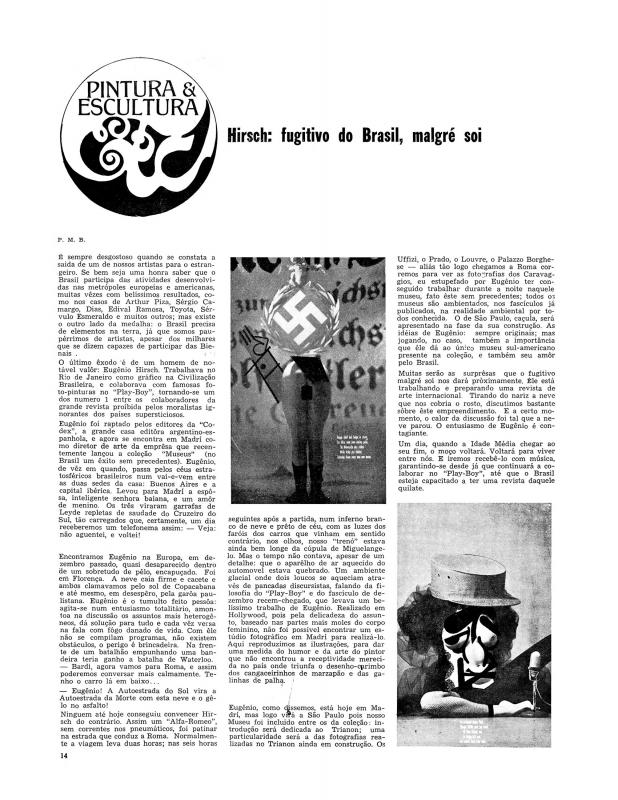This article attests to the voluntary exile of a number of Brazilian artists during the military dictatorship in Brazil (1964–85), particularly during the harsh crackdown following a series of Atos Institucionais that for all intents and purposes, did away with political and social rights. The late sixties witnessed the departure of a large number of Brazilian artists who left the country in search of less oppressive contexts in which to work at their own initiative or in response to invitations from abroad. This situation was aggravated by the Ato Institucional No. 5, issued in 1968, that expressly banned demonstrations and did away with the seniority of a great many professors and public servants, among other rights. In reaction to this grim panorama, many artists did not set foot in Brazil again until after 1978, when amnesty was offered.
[For other texts on the emigration of Brazilian artists during the dictatorship, see ICAA digital archives: “O artista que vai e o que fica na América Latina” (doc. no. 1111181) y “HIRSCH: fugitivo do Brasil, malgré soi” (doc.no. 1111195)].
This article is illustrated with a work by Roberta De Lamônica (1935–1995), one of the artists whose departure is reported in the text. Strangely, during the dictatorship the Brazilian military propagated the slogan “Brasil: ame-o ou deixe-o” [Brazil: Love it or leave it] in the mass media./p>
Lamônica was a printmaker associated with the Nova Figuração movement, although his work also bears the influence of Pop art, and in its figurative form, Surrealism, and Abstract Expressionism. Lamônica is one of the artists that coincidentally never returned to Brazil. Born in São Paulo, artist Wesley Duke Lee (1931–2010) spent the fifties studying in the United States, Italy, Austria, and France. During those years, he came into contact with Robert Rauschenberg (1925–2008), as well as other artists loosely associated with New Figuration, who exercised considerable influence on his work. Duke Lee was responsible for the first art happening in Brazil, which took place in 1963. Along with painter and sculptor Bernardo Cid, fashion photographer Otto Stupakoff, singer Maria Cecília, and writers Carlos Felipe Saldanha and Pedro Manuel Gismondi, he formed part of a movement that would be known in Brazil as Realismo Mágico. In 1966, Duke Lee—in conjunction with painter, photographer, and designer Geraldo de Barros (1923–1998), Nelson Leirner, and other young artists—founded the controversial São Paulo-based Rex group. His work involves issues of memory, eroticism, and a fantastic imaginary.
As a voluntary exile, Antonio Dias (b. 1944) first moved to Paris, where he stayed from 1964 to 1968. He then went to Italy, specifically to Milan, from where he traveled to Nepal and India on research trips; during those years, he also spent periods in New York. He returned to Brazil after the 1978 Amnesty, and in 1988, he moved to Cologne, Germany, and travels occasionally to Rio de Janeiro and keeps a studio in Leblon.
Twelve issues of the magazine Mirante das Artes were published in São Paulo in 1967 and 1968. The editor of the magazine was Pietro Maria Bardi, director of the Museu de Arte de São Paulo (MASP). The far-reaching publication was as democratic as possible considering the political situation in Brazil at the time. In it, Bardi was able to communicate his ideas in opposition to the art market that was taking hold in Brazil at the time.


